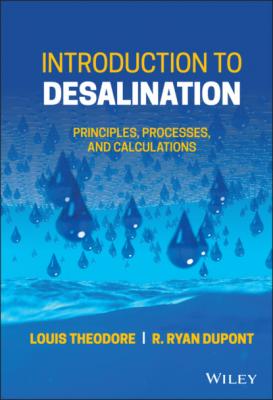Introduction to Desalination. Louis Theodore
Чтение книги онлайн.
Читать онлайн книгу Introduction to Desalination - Louis Theodore страница 34

Once a plan for the solution has been developed, carry out the plan. Choose a basis of calculation, if applicable. During various stages in the solution of a complex problem it may be necessary to use more than one basis. Also remember that the most brilliant work is useless if it cannot be conveyed clearly to other persons by written or oral presentation.
3.8.4 Looking Back and Checking the Problem Solution
The amount of time it takes to check a problem is usually only a small fraction of the time it takes to solve it. Nearly all solutions to physical problems are amendable to verification. Thus, one should always:
1 Look for order-of-magnitude errors. Can the answer be checked by an approximate solution? Does the answer make sense?
2 Attempt to solve the problem by an alternate method.
3 Can the results be verified?
3.9 Illustrative Examples
Five illustrative examples complement the material presented in this chapter.
3.9.1 Illustrative Example 1
Convert the following temperatures.
1 20°F to °C, K, and °R
Solution. The following key equations are employed:
Thus:
Equations 3.5, 3.6, and 3.7 are used as follows:
3.9.2 Illustrative Example 2
The height of a liquid column of mercury is 2.493 ft. Assume the density of mercury is 848.7 lb/ft3 and atmospheric pressure is 2116 lbf/ft2 absolute. Calculate the gauge pressure in lbf/ft2 and the absolute pressure in lbf/ft2, psia, mm Hg, and in H2O.
Solution. Expressed in various units, the standard atmosphere is equal to:
| 1.0 | Atmospheres (atm) |
| 33.91 | Feet of water (ft H2O) |
| 14.7 | Pounds force per square inch absolute (psia) |
| 2116 | Pounds force per square foot absolute (psfa) |
| 29.92 | Inches of mercury (in Hg) |
| 760.0 | Millimeters of mercury (mm Hg) |
| 1.013 x 105 | Newtons per square meter (N/m2) |
The density equation is describing the gauge pressure in terms of the column height and liquid density is:
where Pg = gauge pressure, ρ = liquid density, g = acceleration of gravity, h = column height, and gc = conversion constant. Thus,
The pressure in lbf/ft2 absolute is:
The pressure in psia is;
The corresponding gauge pressure in psi is:
The pressure in mm Hg is:
Finally, the pressure in in H2O is:
The reader should note that absolute and gauge pressures are usually expressed with units of atm, psi, or mm Hg. This statement also applies to partial pressures. One of the most common units employed to describe pressure drop is inches of H2O, with the notation in H2O or IWC (inches of water column).